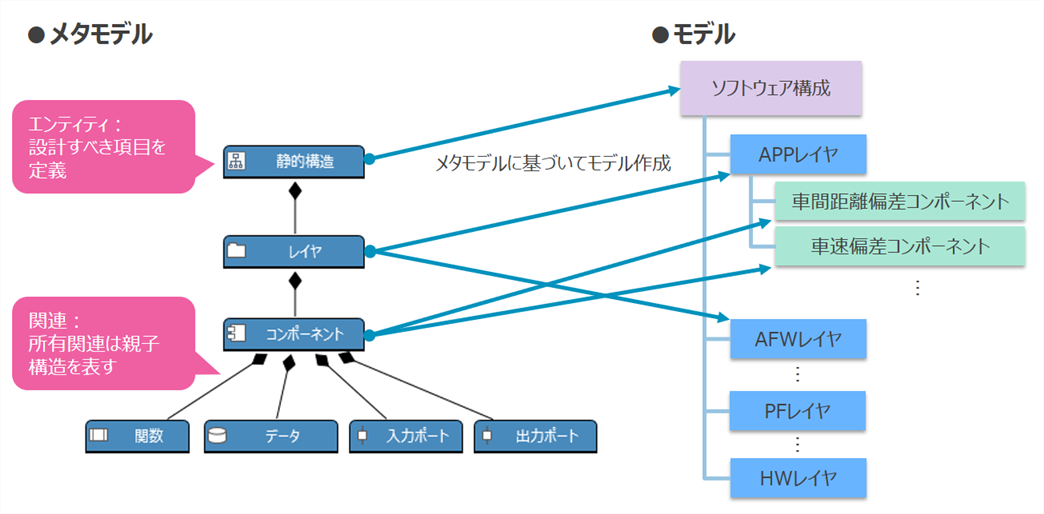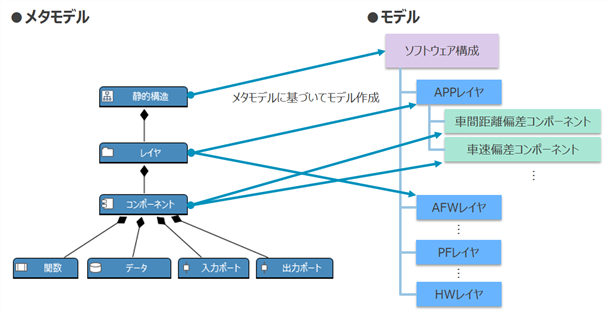Metamodel
What is a metamodel?
Metamodels are the items to be designed and their structural definitions.
Definition example
- Design document system and description items
- Elements that appear as design input/output and their attributes
- Hierarchical structure of structures, whether logical or physical
- Relationship between design elements
Items that were previously defined as templates in design documents can now be defined in the metamodel.
With a general-purpose document creation tool, you can freely describe the design contents, so you may design without noticing inconsistencies or constraint violations. Next Design, on the other hand, allows you to constrain the hierarchical structure and condition the objects that can be associated with it, so you can naturally design according to the metamodel.
The type of design element defined in the metamodel is Entity, The parent-child relationship (hierarchical constraint) of design elements and the reference relationship between design elements are called Relationship.

Relationship between model and metamodel
A model is a unit of all design information about what you are designing. A metamodel is the structure of its design information and the definition of design items.
note
- When applied object-oriented, metamodel entities are classes and models are instances.
Since all models designed by Next Design are created according to the metamodel, the model is inevitably consistent with the structure and items specified in the metamodel.
Conversely, you cannot add undefined design items to the metamodel or change it to a model that does not fit the structure, and you can only create a model that complies with the constraints specified in the metamodel. This is the big difference between a general-purpose document creation tool and Next Design.
